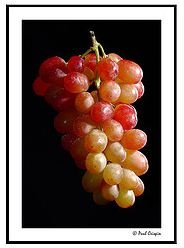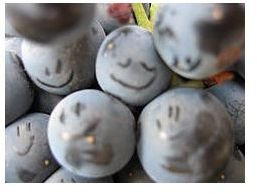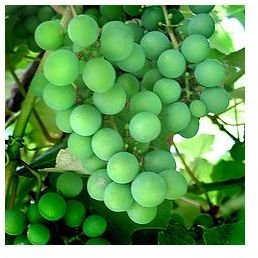Are Grapes Healthy? The History & Nutritional Value of Grapes
What Do You Know About Grapes?
You can start off by saying that they come in green, red, and black varieties, but you’d be one-third wrong. And you probably don’t know why some grapes have seeds and others do not. All you really know is that you can buy them in the grocery store just about any time of the year. So let’s set the record straight!
Grapes Have History…
Grapes grow in literally hundreds of varieties. We know from people who’ve studied the history of grapes that they’ve been with us at least as far back as the ancient Egyptians. Besides enjoying them fresh and whole, we process them to make jams and jellies, juice and wine, vinegar and oil, and other useful by-products. When dried, they are known as raisins and currants. Seedless grapes are cultivated from cuttings rather than from the seeds of other grapes. The green grapes are actually called white, and they are mutations of red grapes.
All grapes contain phytochemicals, which are in a class of nutrients nonessential to human survival but which nevertheless contribute significantly to our well-being. In grapes, the dominant phytochemical compound, also called a phytonutrient, is known as resveratrol, a polyphenol antioxidant.
Not all grapes contain the same nutritional value. Red and black grapes contain significant amounts of another powerful antioxidant called anthocyanin. This chemical contributes to colors in the reddish end of the color spectrum in plants. White grapes do not contain this compound. Its presence in the darker grapes is the reason why we hear that red wine is healthier than white wine. The skins and seeds of grapes contain much higher concentrations than the pulp of both resveratrol and anthocyanin.
Anti-Whats-idents??

So what are these antioxidants, and what do they do for us? First you have to understand what oxidants are. They are also known as free radicals, the cells in your body that have been damaged, mostly from excesses that we are all guilty of—too much sun, too much alcohol, unhealthy foods, nicotine, pollution, and other poor habits. Experts theorize that oxidants contaminate other cells and we then suffer, experts speculate, from heart disease, arthritis, cancer, Alzheimer’s and Parkinson’s disease, cataracts, and other conditions. To visualize the harmful effects of oxidants, think of what happens when oxygen combines with iron: the result is rust. Think of an apple, which turns brown when exposed to the air.
But antioxidants fight against oxidants by binding with these unhealthy cells and stopping them from causing more harm. Scientists are investigating whether antioxidants can actually heal these damaged cells. Even though the Food and Drug Administration (FDA) has not identified specific health benefits of antioxidants, many scientists are working to gather the evidence that the FDA needs.
Many of them believe that grapes keep our blood vessels from constricting, thus alleviating hypertensive episodes. They help skeletal and cardiac tissues to resist aging. Grapes can possibly forestall malignant or benign tumor growth, degenerative nerve disorders, diabetes, viral and fungal growth, and conditions of aging such as poor skin tone or Alzheimer’s disease. It’s easy to see why we read so much about the importance of antioxidants.
This health and nutrition article will provide you with more information on what antioxidants are and how they work.
All This and Vitamin C, Too

Antioxidants are common in foods that are rich in Vitamin C. In a four-ounce serving of grapes, you will consume more than 20% of the daily recommended serving of Vitamin C. It is true that grapes do contain a high amount of sugar, which is converted into carbohydrates. But the positive benefits of fresh fruit fiber, Vitamin C, and antioxidants far outweigh the negatives. Their natural sugars are much more healthful than the processed sugars found in candy.
There are two to three calories in one grape. They rate an A from nutritionists who evaluate food values. Now that you realize how little you knew about grapes, you can enjoy your new knowledge–and a bunch of grapes, too.
